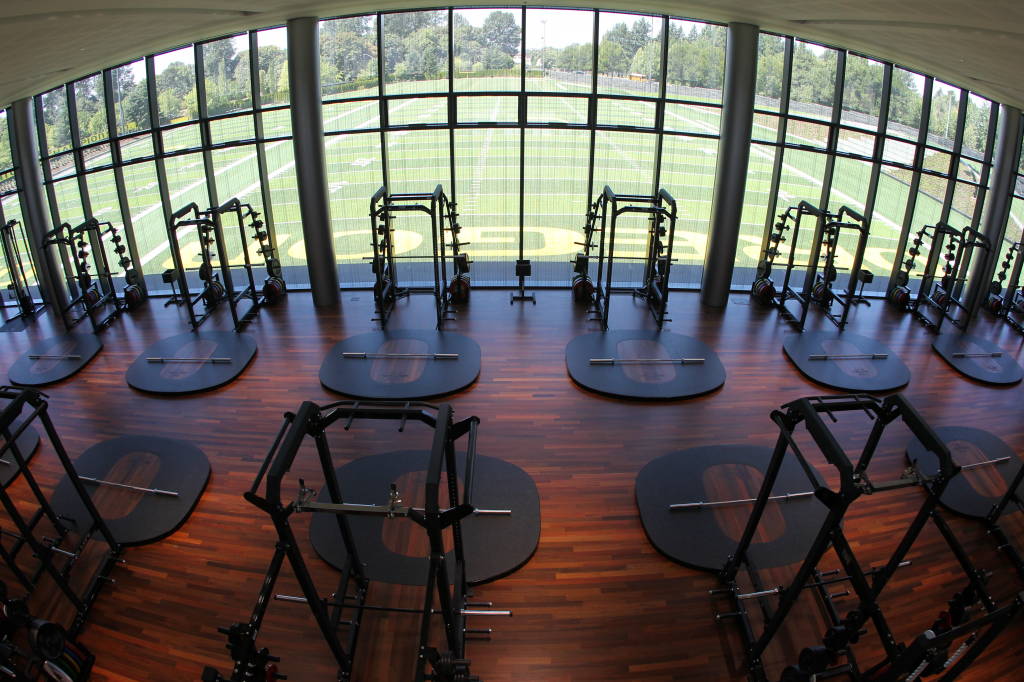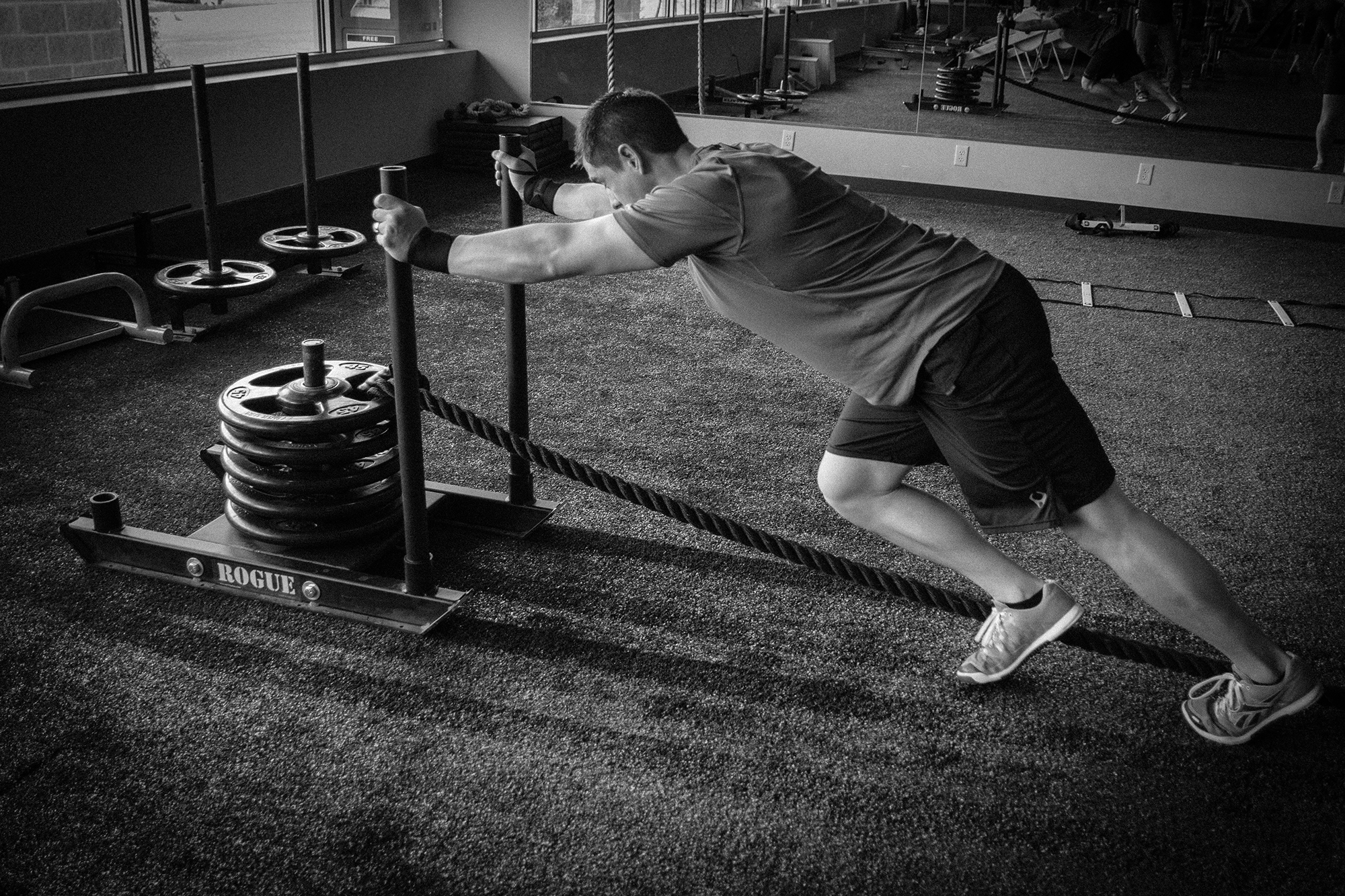Choosing the Racks, Rigs, and Machines to Fit Your Dream Room (Part 3 of 5)
In parts 1 and 2 of this series, we discussed the basics of creating a strategic plan to develop your dream weight room that best suits your population and your plan to train your athletes and students and then the overall design or floor plan of your redesigned, remodeled, or newly constructed weightroom.
If you are reading my articles for the first time, then please navigate to the first two articles here:
Part 1: What Every Strength Coach Needs to Know
Part 2: Envisioning Your Dream Weight Room
By now you should have given a lot of thought to analyzing the purpose of your weight room and the needs that you, your population, and your facility have to meet the purposes you have identified and we are going to tap into that more in looking into what approach you should take when choosing which large pieces of equipment i.e. racks, rigs, and machines you need to fit your dream room.
First, let me save you some time and frustration. Never ask in an open forum “What are the best racks or rigs out there?” or “What machines should have in the weightroom?” I did so on the NHSCCA Facebook page and the myriad of answers and fervent support of equipment dealers and brands was overwhelming! Everyone has their favorite and go-to people for large pieces of equipment for good reason. As my friend and colleague Scott Meier from Farmington High School in Minnesota told me when I was struggling with the overabundance of suggestions I was getting, “...everyone has all kind of suggestions when they aren't the ones spending the money.” I would suggest these steps in your process to decide on what racks, rigs, and machines you might need for your dream room:
- Decide what your non-negotiables are. Things I would consider heavily in no specific order include:
-
-
- Customer Service
- Price
- Quality
- Flexibility or Adaptability of Equipment (How Many Things Can You Do)
- Life Span of the Product
- Floor Plan of Your Facility
- Training Goals For Your Athletes
-
- Tour Multiple Other Facilities and Ask for Demostrations of the Equipment
-
-
- Everything looks fantastic in the suppliers’ brochures.
- Being able to touch, feel, see, and use the equipment is paramount to understanding if it is right for you.
-
- Explore All Avenues of Discounts and Specials
-
-
- You may be able to afford your dream equipment and you didn’t even know it!
-
- Make a List Of Example Facilities You Would Like to Emulate
-
-
- Don’t reinvent the wheel if you don’t have to. Ask lots of questions of why these facilities have each piece of equipment. Almost guaranteed that every coach has one thing in their weightroom that they wish they would have saved money and not bought because it just collects dust. Eliminating those dust catchers can save you time and money.
-
- Discuss Your Non-Negotiables With A Few Trusted Mentors or Friends
-
- Don’t oversaturate yourself with info from an open forum question or the firehose like flow of people knocking on your door who want to sell you their equipment when they figure out that you are looking. With a bond process like we have here at Wamego High School, once everyone has figured out that we are building a new weightroom, we got inundated with phone calls and visits from fitness equipment companies.
- Talk to people you trust and respect about your options and non-negotiables.
Once you have decided on your non-negotiables, then I would do the following:
- Consider Professional Guidelines. I highly encourage you to visit the NSCA Strength and Conditioning Professional Standards and Guidelines document. Specifically, look at Standard 4: Facility & Equipment Set-Up, Inspection, Maintenance, Repair, and Signage. This standard gives you some great guidance on safety, utility, and all manners of facility management.
- Contact Only the Suppliers You Intend to Purchase From. While you may want a competitive bidding process, I feel like it is disrespectful and a waste of time to seek out bids from companies that you never intend to work with or buy from. Some of these professionals who work in sales put a lot of time and effort into renderings, bids, quotes, and travel to earn your business so leading them on is unprofessional in my mind. Contact the companies that you are truly interested in and then as you narrow your choices, respectfully tell each company that you are no longer interested in their product when you make that decision.
- MAKE DECISIONS BASED ON YOUR TRAINING PLAN AND DESIGN. Do not buy things because they are a good deal if you are never going to use them. I for one could buy a multitude of machines that have weight stacks, cables, etc. for a fantastic price from a local dealer, but if I am never going to use them then I am wasting space, time, and money. Buy things that fit your training plan.
- Don’t Buy Everything All At Once. As my friend Rob Brokaw of North Bend Central High School in Nebraska once told me, “What fun is it if you only have one Christmas?” Stretch out your budget and your strategic plan by purchasing the base racks, rigs, and machines that you absolutely need and then add your attachments and bells and whistles as you go. Your athletes are excited by new things so if you can wait a year to add in the landmine attachment to your rack then it may offer a psychological boost to your training and take some stress off your budget.
- Get the Best Bang For Your Buck. My personal suggestion is that you buy the best racks, rigs, and equipment you can for your budget; make sure that it has the most amount of flexibility and expandability (can you add attachments to enhance the rack or rig?); and the equipment that will last the longest. I, myself, would look at buying a product that can last 20 years that the company I buy it from will stand behind and serves all the purposes I need. DON’T MAKE ANY CONCESSIONS TO YOUR NON-NEGOTIABLES!
- Customer Service Is Important. Ask any high school strength coach on the NHSCCA Facebook page whether you should buy a certain specific timing system whose manufacturer I won’t name here and you will find out very soon that customer service is very important when it comes to fitness equipment. No matter the manufacturer, you will inevitably run into some flaw, mistake, or malfunction that requires you to deal with the company to rectify. Pick a company with a solid reputation for standing behind their product and is easy to deal with. I would also suggest picking a manufacturer that will install your equipment correctly. While you may save some dollars by doing it yourself, you will save a lot of time, strain, and headaches by letting the professionals do their job.
Next time, I’ll be discussing “Part 4: ”Why Weight? Purchasing the Right Options for Loading Your Athletes” We’ll discuss how to go about choosing and purchasing the right weights i.e. plates, dumbbells, kettlebells, etc. for your dream facility.
Subscribe to our blog
Subscribe to receive the latest blog posts to your inbox every week.
Related posts

Building Your Ideal Weight Room: Construction Tips

If You’re Going Through Hell, Keep Going! (A Strength Coach Story)
.jpg)